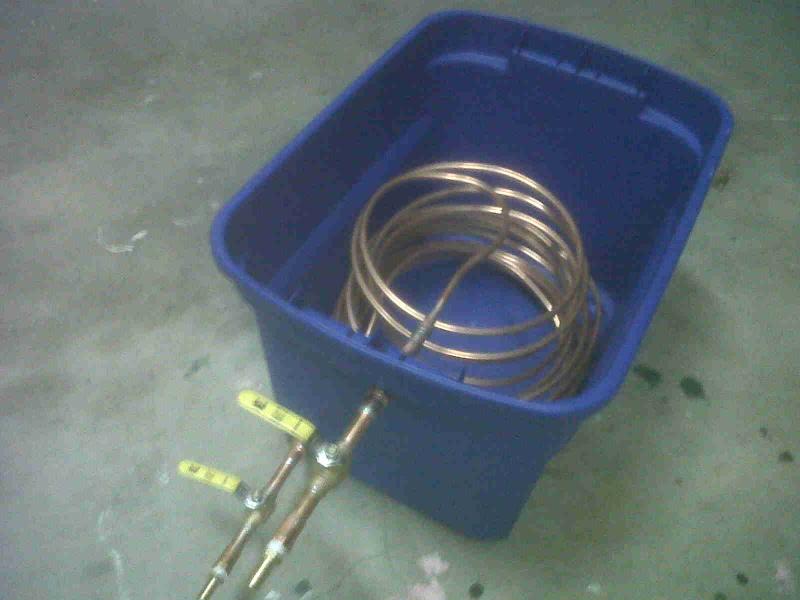I've seen the immersion chillers and such, but decided to try my own technique. Instead of an immersion chiller I figured i'd run 50ft of 3/8 copper through and Iced up tub. It's not finished yet, have some cleanin up to do on the joints and such, but wanted to see if anyone had any feedback on the overall design. I'm going to put some spacers in between the coils to keep maximum surface area, but I hoping it will cool down hot wort pretty quickly.



